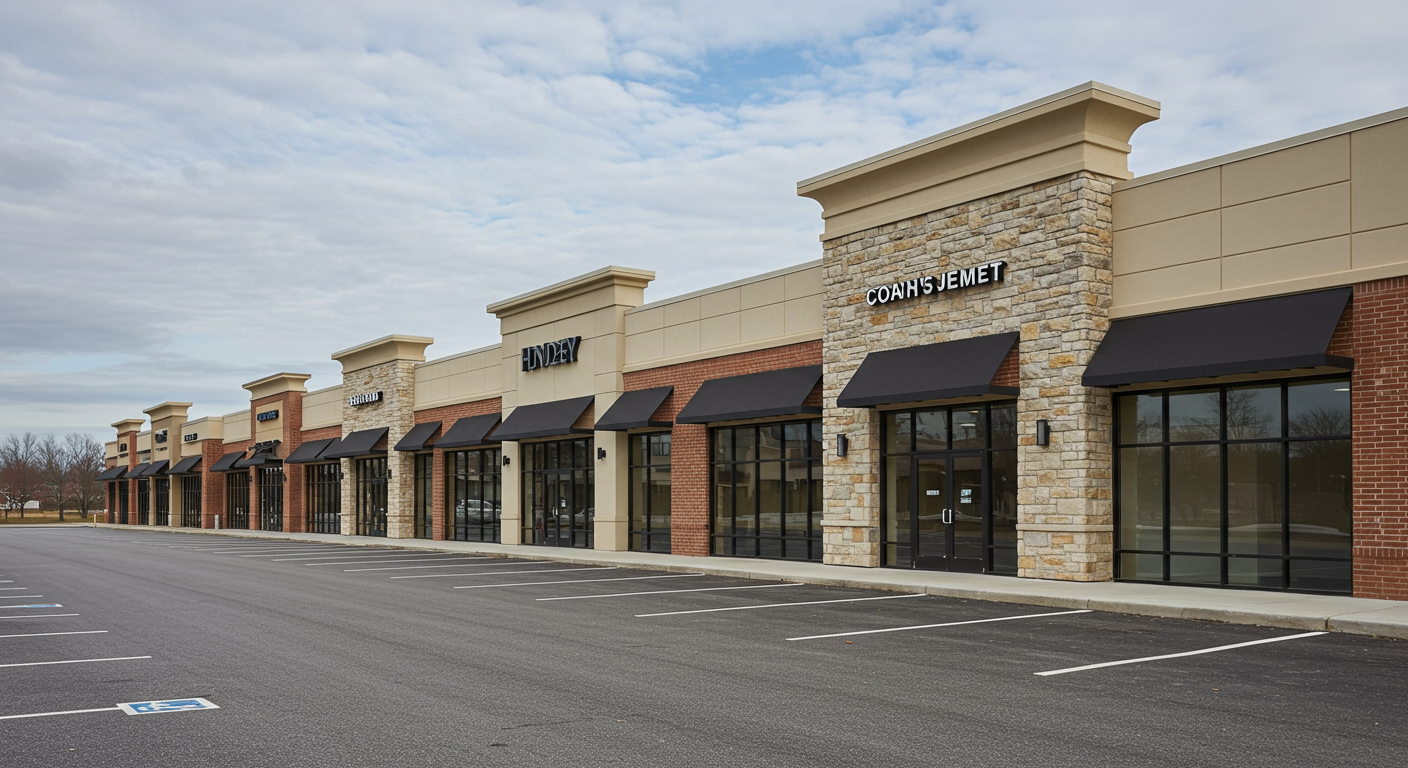When you decide to buy or sell commercial property in Ontario, one of the most crucial documents that will play a part in the transaction is the Transfer Deed. This legal document facilitates the change of ownership and is a binding agreement between the buyer and seller. But what exactly does it entail?
Whether you are a seasoned investor or a first-time buyer, understanding what a Transfer Deed for commercial property in Ontario is can help you navigate the process with ease. Let’s take a closer look at what a Transfer Deed is and how it impacts your real estate transactions.
Click here to follow my Instagram.
Click here to follow my Facebook.
Click here to visit our blog page!
LET'S CONNECT
EMAIL: [email protected]
PHONE NUMBER: (416) 220 7045
Address: 55 Director Ct. Woodbridge ON., L4L 4S5
What is a Transfer Deed for a Commercial Property in Ontario
A Transfer Deed is a formal document that transfers the ownership of a commercial property from one party to another. This document is necessary for the legal transfer of property in Ontario. It contains information about the property, the parties involved, and the terms of the transaction.
The Transfer Deed serves as proof of ownership once it is registered with the land registry office. It is important to note that the deed is not the same as the agreement of sale, though they are related. While the sale agreement outlines the terms of the purchase, the Transfer Deed is the formal step in transferring ownership.
Why is a Transfer Deed Important for Commercial Property?
A Transfer Deed is vital for commercial property transactions because it is the legal document that:
● Transfers ownership: It ensures that the ownership of the property is legally transferred from the seller to the buyer.
● Provides proof of transaction: After it is registered, the deed becomes a public record that proves the transaction has occurred.
● Protects both parties: By having a legally binding document, both the buyer and seller are protected in case of disputes.
Without a Transfer Deed, there is no legal confirmation that the property has changed hands, which could lead to confusion and complications in future transactions.
Key Elements: What is a Transfer Deed for a Commercial Property in Ontario
A Transfer Deed for commercial property in Ontario typically includes the following key elements:
1. Names of the parties: The buyer and seller's full legal names.
2. Description of the property: A detailed description of the commercial property, including its address, legal description, and boundaries.
3. Date of transfer: The date when the ownership will officially change.
4. Consideration: The agreed-upon purchase price or consideration for the transfer of ownership.
5. Signatures: Signatures of both the buyer and seller, usually witnessed by a lawyer.
The deed must be signed and dated before being filed with the appropriate land registry office in Ontario.
What is a Transfer Deed for a Commercial Property in Ontario and How Does it Work?
The Transfer Deed process in Ontario involves several important steps. Here's how it works:
1. Agreement of Sale: Before the Transfer Deed is executed, there is typically an agreement of sale between the buyer and seller.
2. Preparation of the Deed: Once both parties agree to the sale, a lawyer prepares the Transfer Deed based on the terms of the sale.
3. Signing the Deed: Both parties sign the Transfer Deed, and their signatures must be witnessed by a notary or a lawyer.
4. Registration: The Transfer Deed is then filed with the Ontario Land Registry, where it is officially recorded, and the ownership transfer is completed.
After the Transfer Deed is registered, the buyer becomes the legal owner of the property, and the previous owner’s rights are extinguished.
Step-by-Step Process of Creating a Transfer Deed
Creating a Transfer Deed involves several critical steps:
1. Consulting with a Lawyer: Both the buyer and seller should consult with a real estate lawyer to ensure that the deed is prepared correctly.
2. Drafting the Deed: The lawyer will draft the Transfer Deed, including all relevant information such as the buyer’s and seller’s details, the property description, and the purchase price.
3. Reviewing the Deed: Both parties review the document to ensure that the information is accurate.
4. Signing the Deed: The deed is signed by both parties, typically in front of a lawyer or notary.
5. Registering the Deed: Finally, the Transfer Deed is filed with the Ontario Land Registry.
Legal Requirements for a Transfer Deed
For a Transfer Deed to be valid in Ontario, certain legal requirements must be met:
● Proper Identification: Both the buyer and seller must provide valid identification to verify their identity.
● Consideration: The purchase price or consideration for the property must be clearly stated in the deed.
● Legal Description: The legal description of the property, which may include parcel numbers, must be included.
● Witnessing: The signatures must be witnessed by a lawyer or a notary public.
Failure to meet these requirements could result in delays or complications in the transaction.
Who is Involved in a Transfer Deed for Commercial Property?
Several parties are involved in the Transfer Deed process:
1. Buyer: The individual or entity purchasing the commercial property.
2. Seller: The individual or entity selling the commercial property.
3. Lawyers: Both the buyer and seller should have legal representation to prepare and review the deed.
4. Land Registry Office: The government office where the deed is filed for official registration.
Each of these parties plays a critical role in ensuring that the Transfer Deed is properly executed and that the transaction is legally valid.
Role of Lawyers in the Transfer Deed Process
Lawyers play an integral role in ensuring that the Transfer Deed is executed correctly. Their responsibilities include:
● Drafting the deed: A lawyer drafts the deed based on the terms of the sale.
● Ensuring compliance: They ensure that all legal requirements are met for the deed to be valid.
● Providing legal advice: They guide the buyer and seller through the process and explain the legal implications of the transaction.
Having a qualified lawyer is crucial in avoiding legal issues down the line.
How to Register a Transfer Deed for Commercial Property
Once the Transfer Deed has been signed, it must be filed with the Ontario Land Registry Office. The registration process involves submitting the deed along with the required documentation and payment of fees. Once registered, the ownership change is officially recorded, and the buyer becomes the legal owner of the property.
What Happens After the Transfer Deed is Signed?
After the Transfer Deed is signed and registered, the following happens:
1. New Ownership: The buyer assumes ownership of the commercial property.
2. Title Search: A title search may be conducted to confirm that the transfer has been properly recorded.
3. Final Closing: Any remaining balances are settled, and the transaction is concluded.
The Transfer Deed serves as a public record that the property now belongs to the buyer.
Common Issues in Transfer Deed for Commercial Property
Some common issues that may arise during the Transfer Deed process include:
● Incomplete Information: If the deed contains errors or missing details
, it can cause delays or complications in the registration process. It's crucial that both the buyer and seller verify all the information before signing the deed.
● Disputes Over Ownership: Sometimes, there may be disputes regarding ownership or claims on the property. This could delay the transfer process, especially if there are any outstanding mortgages or liens on the property.
● Failure to Meet Legal Requirements: If the deed doesn't meet all the legal criteria, such as proper witnessing or the inclusion of a correct legal description, it may not be accepted by the Land Registry Office, requiring the parties to refile the document.
Risks and Challenges of Transfer Deeds for Commercial Property
There are various risks and challenges that both buyers and sellers face during the Transfer Deed process for commercial property. Some of these include:
1. Legal Liabilities: If there are issues with the property title, such as undisclosed encumbrances, the buyer may face legal liabilities. These can include unpaid taxes or unresolved claims against the property.
2. Disputes After Transfer: Once the property transfer is complete, conflicts may arise regarding issues like zoning, environmental concerns, or existing tenant agreements. These can lead to costly legal disputes if not properly addressed before the transfer.
3. Delays in Registration: The registration of the Transfer Deed might take longer than expected due to backlogs in the Land Registry Office. This can delay the official transfer of ownership, affecting financing or the ability to use the property immediately.
4. Title Defects: If there is a problem with the property's title, such as a previous owner's claim, it can result in the buyer having less-than-clear ownership. This can be rectified by purchasing title insurance, but it's an added cost and potential complication.
Frequently Asked Questions (FAQs)
1. What is the difference between a Transfer Deed and a Sale Agreement?
A Sale Agreement outlines the terms of the property sale, such as the price, conditions, and any contingencies, while a Transfer Deed is the official document that legally transfers ownership of the property once all conditions are met.
2. Do I need a lawyer to create a Transfer Deed in Ontario?
Yes, it is highly recommended to work with a real estate lawyer when preparing and signing a Transfer Deed. A lawyer ensures that all the legal requirements are met and protects your interests during the transaction.
3. Can I register a Transfer Deed for commercial property online?
Yes, Ontario's Land Registry System allows for electronic registration of deeds, making it a more convenient process. However, you will still need a lawyer to guide you through the electronic registration process.
4. How long does it take to complete the transfer process in Ontario?
Typically, the Transfer Deed process can take anywhere from a few days to a few weeks, depending on the complexity of the transaction and the workload at the Land Registry Office.
5. What happens if the Transfer Deed is not registered?
If the Transfer Deed is not properly registered, the buyer does not legally own the property, and the seller may still retain ownership rights. Registration is crucial to finalize the transfer of ownership.
Conclusion
In conclusion, a Transfer Deed is an essential part of any commercial property transaction in Ontario. Whether you're a buyer or seller, understanding the process and legal requirements for transferring property ownership is vital. By ensuring that the Transfer Deed is properly executed and registered, both parties can protect their interests and avoid future disputes.







